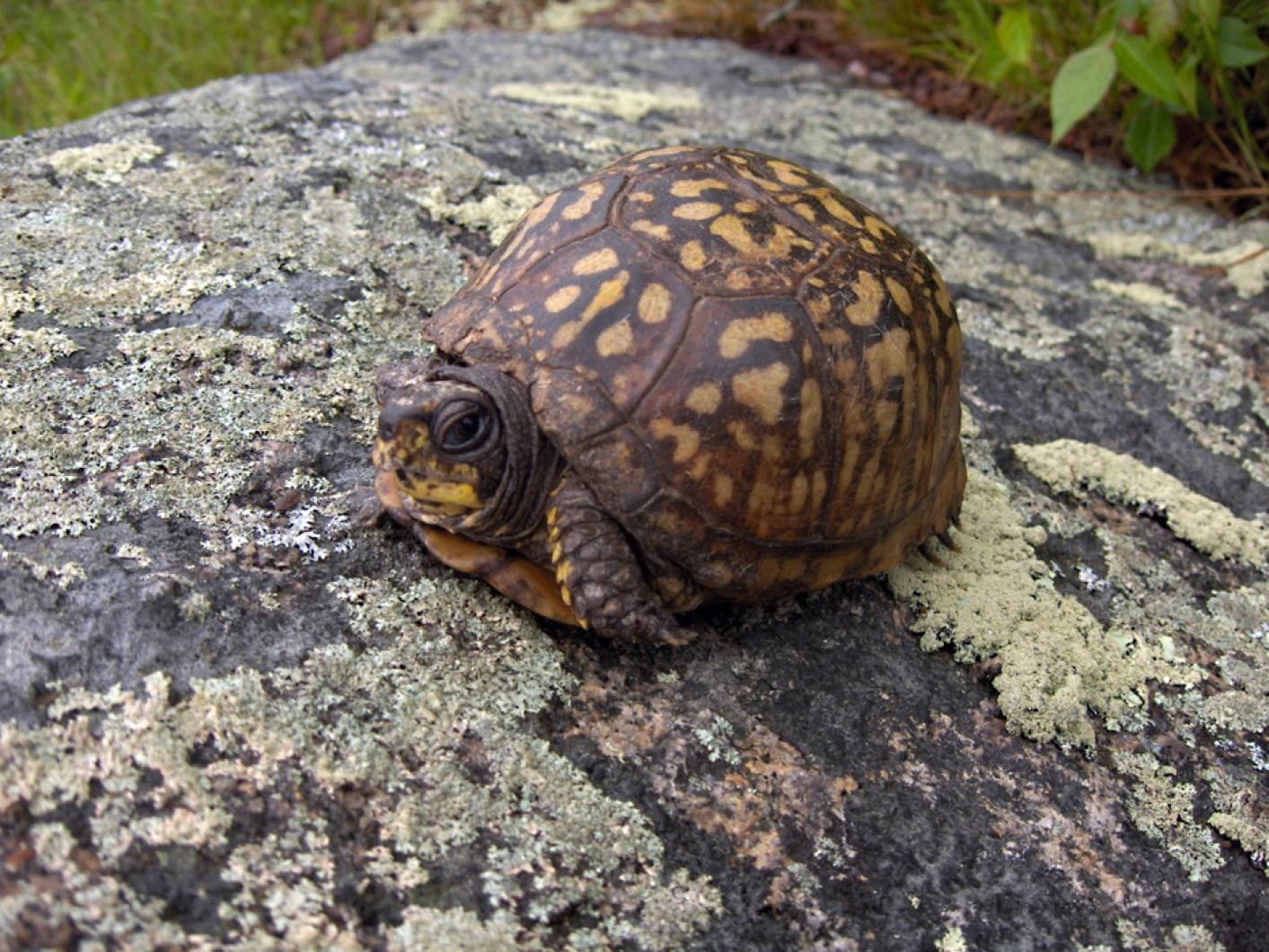Same time, next year.
In the past two weeks, I have had three run-ins with an old friend. We seem to meet at the same place at the same time annually. I shouldn’t be surprised.
My pal is a box turtle and she seems to show up year after year without fail, along my driveway. I should be thankful, as box turtles truly live local, so the recurring sighting tells me that she is still alive and well. A box turtle’s home range has a diameter of only about 750 feet, which is the length of two and a half football fields, and it is often the same area where they were born. That is why development, even the building of one house, can affect them so personally and have a detrimental effect on their populations.
There is only one thing that will make them travel beyond their usual range, and that is the search for a nest site. One mile is the farthest that they will traverse, even for this important reason.
Now is the time that box (and other turtle varieties) are being seen. Love is in the air (and on the ground), and these turtles are searching out sites in which to spawn. It is during the spring, when they have emerged from the winter hibernaculum (under the leaf litter and below the soil), that they are most often seen looking for a place to lay their eggs.
Sandy soils, including dirt roads or trails, suit them just fine. Female box turtles will lay up to six eggs in a shallow nest that they dig and then cover up. Once they are finished, they leave virtually no trace. It has taken these reptiles years to reach this point of procreation. Box turtles are slow reproducers, reaching sexual maturity after up to 13 years.
I hope that I can look forward to a long relationship with my turtle friend. She might have been here before I arrived and can remain after I go. Box turtles live a long time: up to 100 years is possible. Age these creatures by looking at their scutes. These are the square plates that make up their top, boxed shell, which is called a carapace. Like trees, scutes have growth rings that can be counted to determine age.
Turtles can’t keep their gender any more secret than their age. Male box turtles have red eyes and a concave plastron (the bottom of their shell). This makes sense when one thinks about the difficulty of two hard-shelled turtles mating — the male’s curvature fits atop his female partner’s domed top shell. Females have a flat plastron and their eyes are yellow or brown. The male also tends to be larger and have thicker, longer tails.
Baby box turtles won’t come along until early fall, since it takes almost 90 days for the eggs to mature. It is unlikely that you will ever get a glimpse of these tiny turtles, since they are only 1.25 inches long when newly hatched. It may be a few years until you see them without your glasses; they only grow one-half to three-quarters of an inch per year.
I wish my friend the best of luck and hope that she will have many offspring. Far from avoiding her, I hope that we will never stop meeting like this.
Suzan Bellincampi is director of the Felix Neck Wildlife Sanctuary in Edgartown.







Comments
Comment policy »